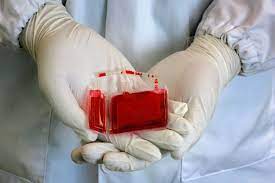
During your nine months of pregnancy journey, the umbilical cord acts as a lifeline between you, and your baby, through the placenta. In fact, both the placenta and the umbilical cord helps is the source of oxygen and nutrition that passes from you to your baby inside you.
Earlier, the umbilical cord was routinely and medically discarded after the birth of the baby. But, with the development of science and technology, the life-saving potential of umbilical cord blood stem cells has been discovered, and that is the reason that many expectant parents make an informed decision about cord blood banking.
But is that the only reason to bank the baby’s cord blood at the time of childbirth? No! Definitely not. Here are some of the interesting facts that can make cord blood worth saving.
The Umbilical Cord Blood is the powerhouse of blood-forming stem cells:
The cord blood stem cells have haematopoietic or blood-forming stem cells which can divide, differentiate, and renew themselves to treat blood-related disorders like cancer, and anaemia. That said, cord blood stem cells were first introduced in the treatment of Fanconi Anaemia in 1988. In fact, these stem cells have the power to treat over 80 life-threatening diseases.
Cord blood stem cells are naïve and primitive in nature:
The stem cells are present in the bone marrow, and the peripheral blood. But, in comparison to the other sources of stem that are not so potent, the cord blood stem cells are naïve and primitive.
Cord blood collection is easy and safe:
You may have delivered your baby vaginally or via an emergency c – section; the cord blood banks that you have spoken to carry out the entire cord blood collection process. The hospital staff will cut and clamp the umbilical cord just a few inches apart, and use a sterile needle, and bag to collect the cord blood without giving pain to either the mother or the baby.
Perfect match is found:
Usually, your baby’s cord blood stem cells will be a perfect match with his or her own. However, there will be a 50% match with the siblings as well as there will be a 75% match with the parents. The better the match before or during stem cell transplantation, the lesser will be the complications post-transplantation.
Saving at the time of birth is for safety:
Saving cord blood with some of the largest stem cell banks in Asia for more than 21 years will save a lot of time and money during stem cell transplantation.
So, cord blood banking is essentially cord blood collection, processing, and banking (banking over 2 decades). And when as parents-to-be, you get the chance to bank your baby’s cord blood, you bank your baby’s stem cells in public and private cord blood banks. In that case, while you bank your baby’s stem cells in a private stem cell bank you can keep your baby’s stem cells safe for more than 21 years by paying a nominal price. However, in a public cord blood bank, you might have to donate cord blood for the purpose of medical research as well as treatment.



